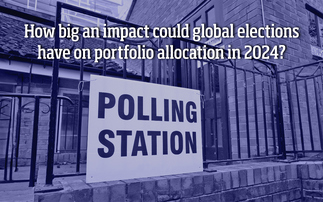Peter Schwabach of Shield Investment Management and Simon Wajcenberg of North Block Capital, discuss how they are using crypto assets to generate above-average returns for investors as the sector seeks regulation.
It was just ten years ago that an anonymous entity posted a white paper titled Bitcoin: A Peer-to-Peer Electronic Cash System detailing the concept of a new electronic currency system and how it could work. A mere few months later, the first ever Bitcoin transaction took place between its still-anonymous founder and an early contributor to the project.
Since then, crypto assets have come a long way. Today there are approximately 3,000 coins and tokens in existence according to Simon Wajcenberg (pictured right), CEO of North Block Capital, which invests in blockchain and crypto currencies. In the near future, there are likely to be significantly more as the market continues to grow.
At its simplest level, crypto assets are digital units of value that in specific situations offer a safer, faster and cheaper means of transferring value between counterparties than fiat currencies (which are known as legal tender whose value is backed by the government that issues it).
Like fiat currencies, crypto asset values are based on supply and demand metrics, and takes into account the energy and computational costs of recording and validating transactions onto the blockchain - a process known as ‘mining'.
According to Shield Investment Management managing partner Peter Schwabach (pictured left) there are already 50 million users of crypto currencies worldwide, among them large institutions including Fidelity, Goldman Sachs and the largest American Ivy League endowment funds to name a few.
In addition, the blockchain technology supporting and facilitating the digital currencies is already being used by the majority of global financial institutions in the $29trn cross-border currency transfer market.
"Blockchain is being used by 85 of the largest global financial institutions, so this is a technology that has already been adopted by the industry," notes Schwabach. "And for banks the use of blockchain technology in cross-border currency transfers helps them save substantially on transfer costs and increases the speed and security of transactions."
Risky sector?
For many investors however, risk can be a key detractor from the sector. Unlike traditional currencies, there is no central bank to regulate money supply or implement fiscal initiatives that can help control individual crypto currency monetary values. Meanwhile, volatility among individual currencies has resulted in investors remaining wary.
Yet the price of individual currencies such as Bitcoin are in many ways irrelevant to Wajcenberg and Schwabach, who both run funds investing in the technology driving the sector and not just the assets themselves. This investment strategy helps them not only control risks but maintain steadier returns for their investors.
For example, Wajcenberg's North Block fund aims to deliver returns for investors through the active management of blockchain enabled technology assets as well as selectively investing in digital currencies. He likens the fund's investment approach to that of a "traditional venture capital tech" fund.
"Out of a field of 3,000 international coin offerings (ICOs), we have made around 25 currency investments over the past three years. I think that shows we are highly selective about where we invest which is crucial to our investment strategy," explains Wajcenberg.














